The Chinese lion dance is a performance not to be missed if you ever get the chance to see one. Chris Yip writes about this very traditional Chinese cultural dance in a walkthrough of its origins and story in Malaysia.
“Bang Bang Dong Dong Cheng Cheng! The mood is festive and colorful, there is the loud beat of drums, gongs, and heavy clanging of cymbals while the continuous mini ‘explosions’ of firecrackers crackle in the background. The colourful lion costume made up of a large horrendous yet impressive-looking head with large blinking eyes, and a body with a tail moves vigorously in exaggerated lion movements and behaviour with two dancers in them prancing around choreographically. A crowd surrounds the exciting spectacle while looking on with amusement and awe at the skill and prowess of the lion dancers entertaining them”.
This is a typical scene in Malaysia during Chinese festive celebrations or events where the Chinese lion dance is very much a part of the nation’s heritage of varied cultures. We take a walk through the story and history of the Chinese lion dance in Malaysia and its origins in China while also delving into its intricacies and components.
The History
The Chinese lion dance is very much intertwined throughout the history of old China and many other regions including South East Asia. Although having had initial influences from India and Iran, the Chinese lion dance is very much rooted in and a cultural symbol born of ancient Chinese folklore. It is a traditional dance which mimics the behavior or movements of the lion in a performance that involves a lion costume to bring good luck, prosperity, and to chase away evil spirits.
The Chinese lion dance throughout the world is usually performed during the Chinese New Year festival, and other Chinese traditional, cultural, and religious celebrations. But it is often performed also at business opening events, wedding ceremonies, auspicious celebrations, religious festivals, and also to honour important visitors by Chinese hosts. The Chinese lion dance can also involve two masked dancers or jokers who accompany the act and constantly provoke the lion as part of the performance and entertainment.
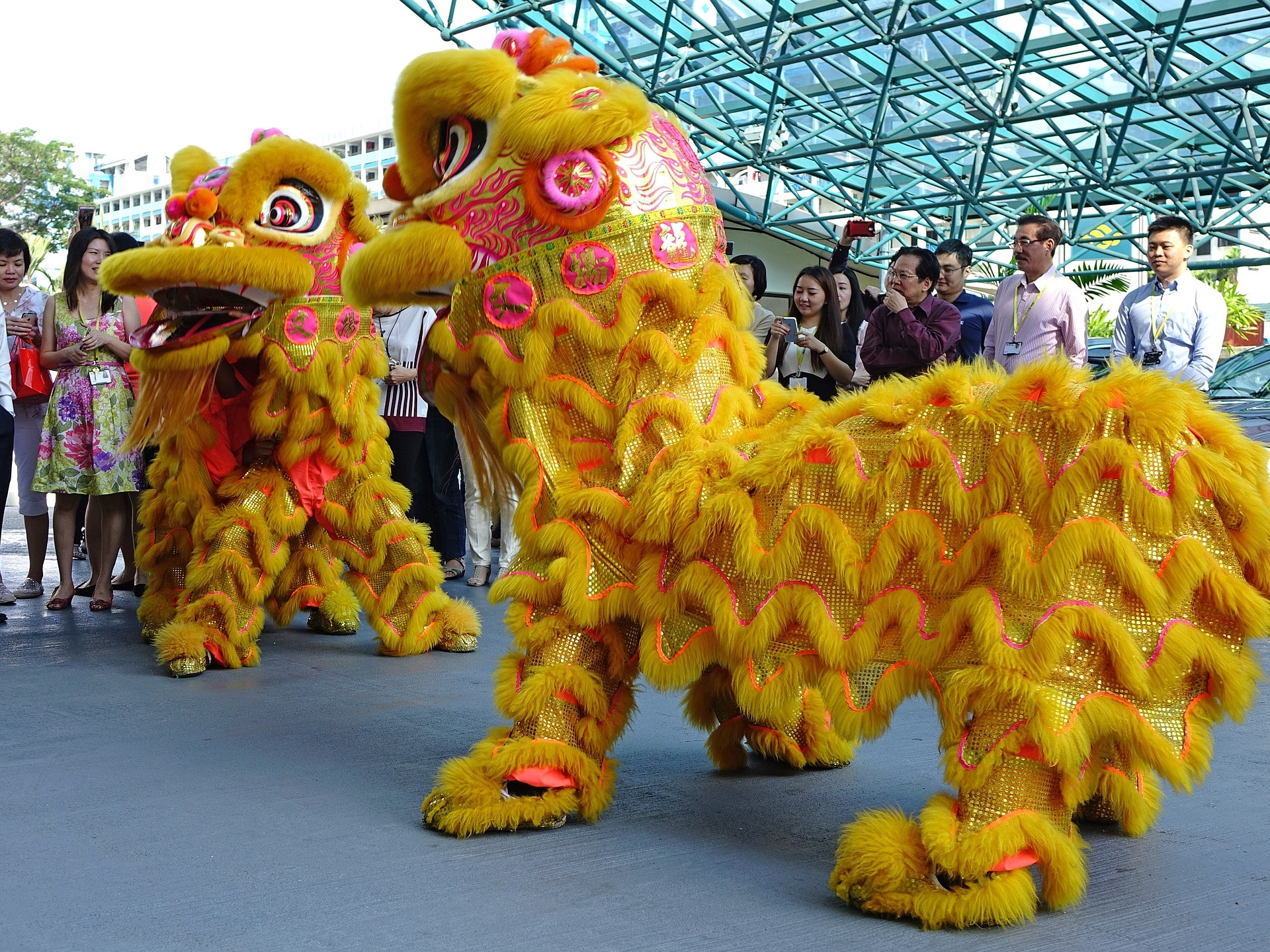
Its origin through a number of dynasties in China is filled with mysticism and legends mixed with history where its fundamental dance movements can be found in Chinese martial arts and civil acrobatics. It can be generalized into two basic forms, the Northern lion and the Southern lion dance. The Southern lion dance predominates in South East Asia, supported and propagated by Chinese migrants from Southern China like Guangdong province in that region.
It has three styles of influence – Hok San, Fut San, and Fut Hok – while various versions of both the Northern and Southern lion dance are found in Korea, Japan, Tibet, Vietnam and other countries. The Green Lion head is popular with the Hokkien people and Taiwanese besides the Muslim minority group of Shenqiu County in Henan who have their own style of the lion dance also.
In Malaysia, the culture of the Chinese lion dance was largely imported, in the nineteenth and twentieth century, into the region together with the mass migration of Chinese seeking their fortunes and a better life in this country fondly known to them then as the land of milk and honey.
Revival of the Dance
For a long time, the Chinese lion dance remained relatively dormant back then when this country was still called Malaya. There were few lion dances performed in those days as there were not many Chinese lion dance associations and troupes in existence in those times. But after the Second World War and the Emergency period, as the Chinese communities in the nation became wealthier and more culturally awakened there was a revival in interest in the Chinese lion dance.
Associations and youth movements were started where the training and practices of lion dancing was nurtured and promoted. A trend started in the 1960s to 1970s where dedicated old practitioners in this ancient cultural art trained young people, who otherwise would have remained unskilled and with little or no training, to become exponents of lion dancing. The Malaysian government during that era recognized and singled out the Chinese lion dance as a significant part of the Malaysian Chinese and national culture which helped boost and develop the art, its popularity, and the industry of this traditional dance.
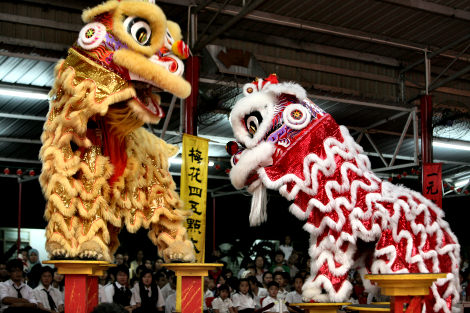
A few Chinese Malaysians began producing lion heads and costumes on their own instead of importing them from China which was rather expensive and difficult back in the 1970s and 1980s. A current well-known name in Chinese lion head construction is Siow Ho Phiew (62), a master craftsman in his trade as well as pioneer. The lion head normally is 9kg to 15kg in weight comprising mainly paper-mache material, bamboo, blinking eyes, and a mouth that snaps.
It is also adorned brilliantly with feathers, furs, mirror-glass, and glitter. Nowadays in Malaysia, troupes of lion dances from numerous associations can be seen quite often especially during the Chinese New Year festival season travelling from one venue to another in open trucks. They usually perform at individual homes, business premises, shopping complexes and hotels etc as part of the season’s celebrations.
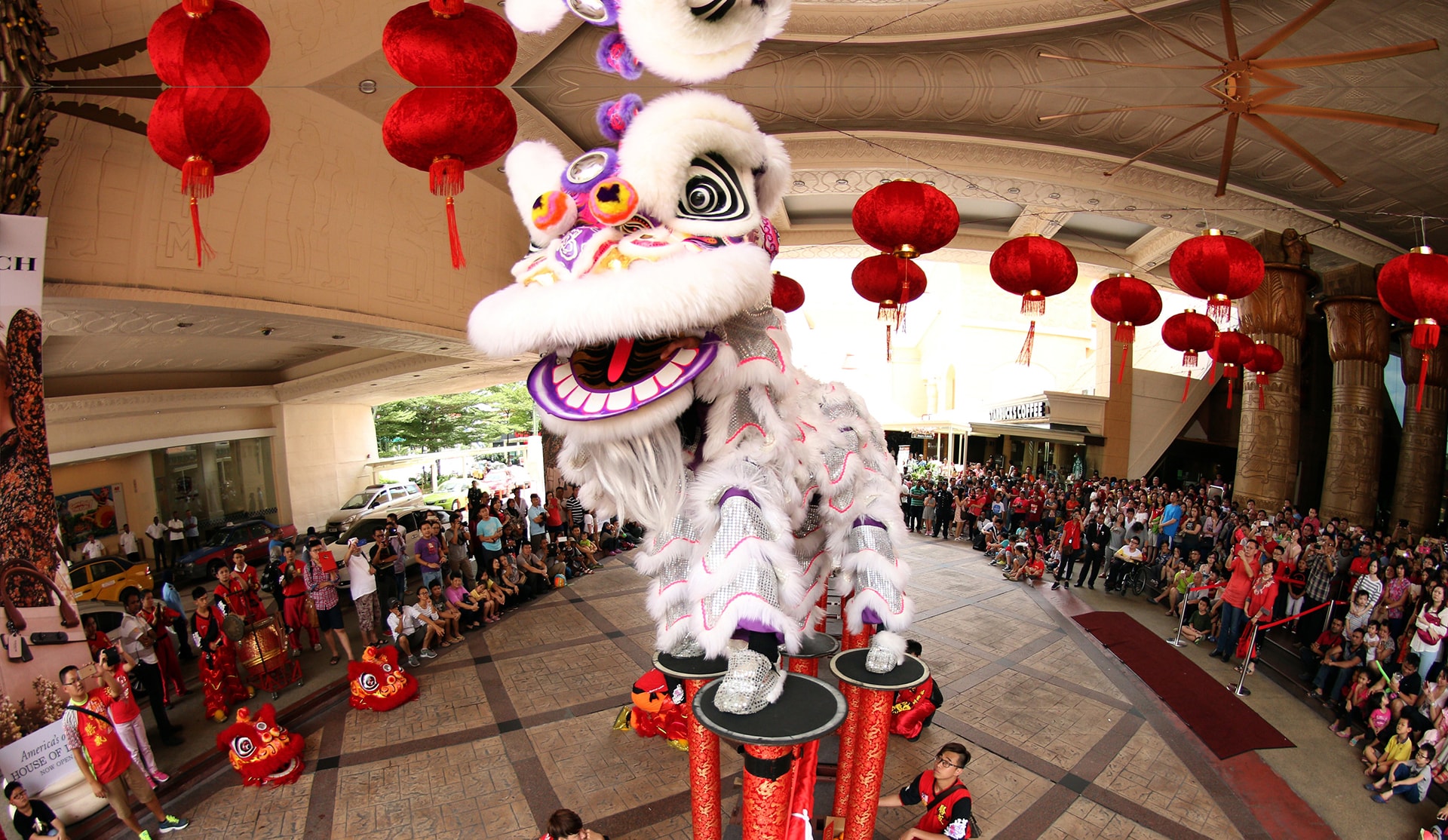
In the 1990s lion dance competitions started to be more frequent and popular locally which led to international lion dance competitions being birth in Malaysia. Other countries like Singapore, Taiwan, and Hong Kong followed suit where now the world championships in Chinese lion dance is held in Malaysia every two years. Called the Genting World Lion Dance Championships, this event has been won almost every time by a Malaysia troupe. Usually 21 poles or ‘Jongs’ are involved in competitions which normally can reach heights of 3 meters and even has reached heights of 6 meters in championships pioneered by the Malaysians.
And the good news is that Chinese New Year is just round the corner again and will be celebrated from February 16 to March 2. It will be a time of joy, celebrations, family reunions, visitations of homes of families by relatives and friends. There will also be lots of delicious food for the foodies, numerous ‘Ang Pows’ (red packets of money) for the unmarried and kids, and lion dances and fireworks for those who appreciate culture and excitement!
"ExpatGo welcomes and encourages comments, input, and divergent opinions. However, we kindly request that you use suitable language in your comments, and refrain from any sort of personal attack, hate speech, or disparaging rhetoric. Comments not in line with this are subject to removal from the site. "

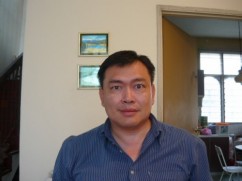
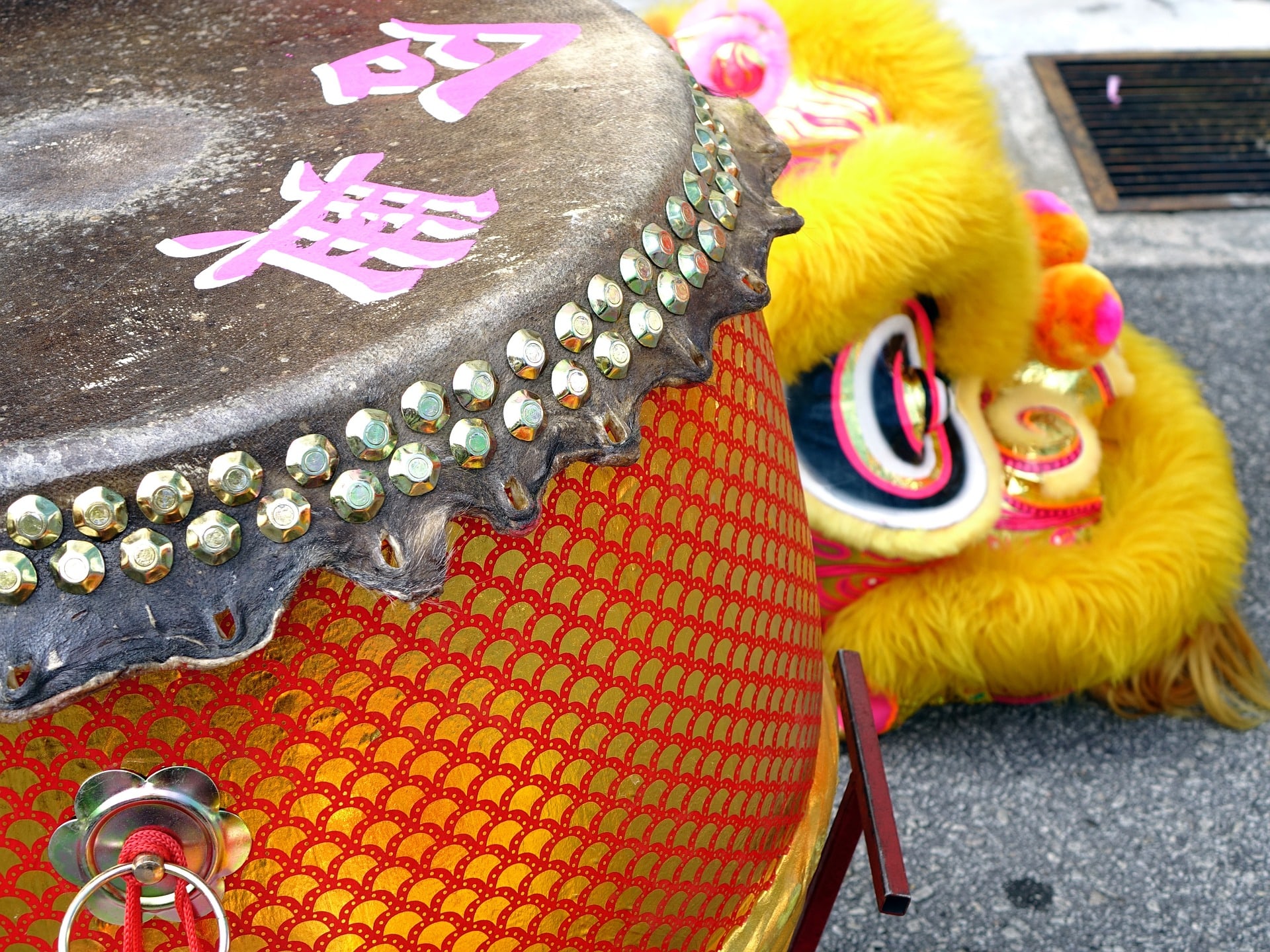

















Francis Liew